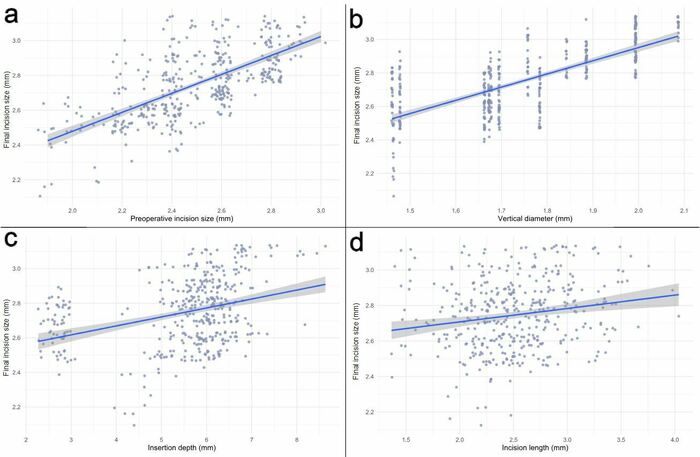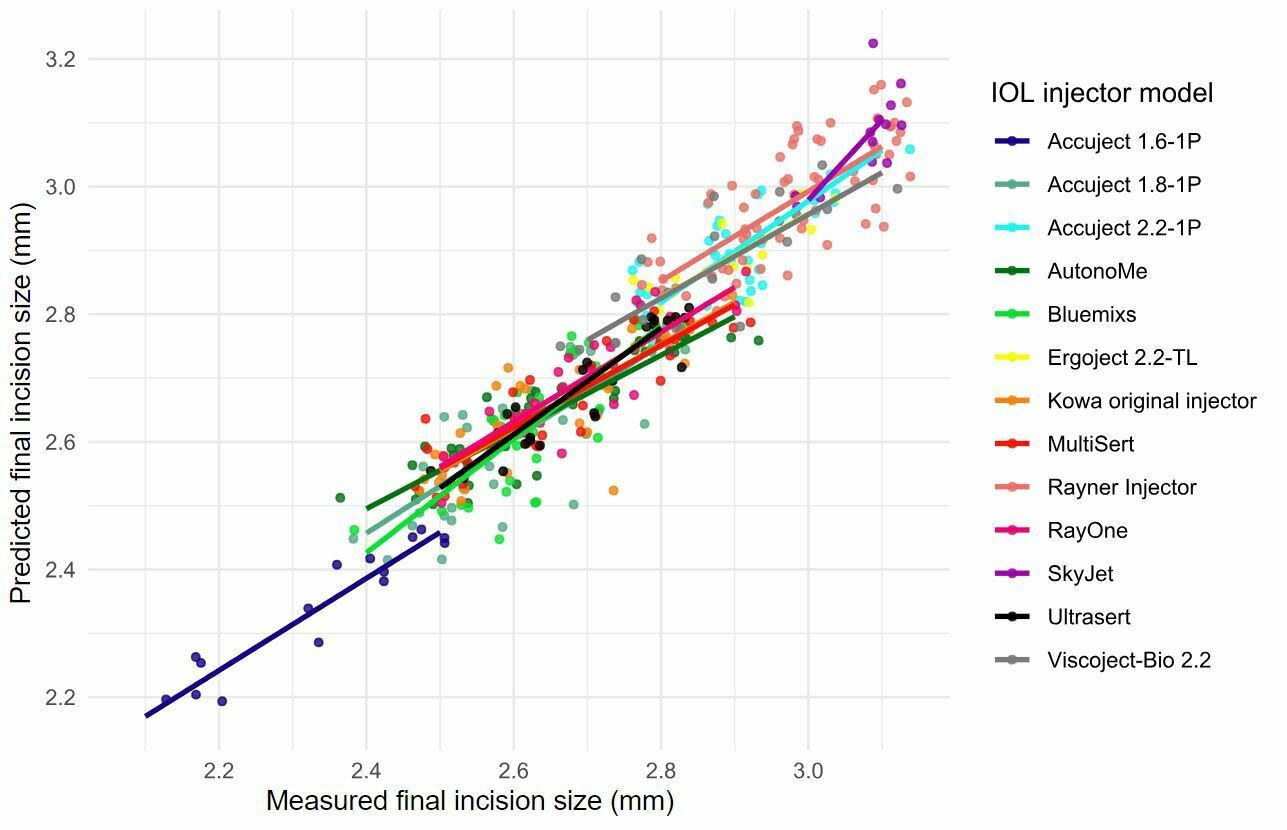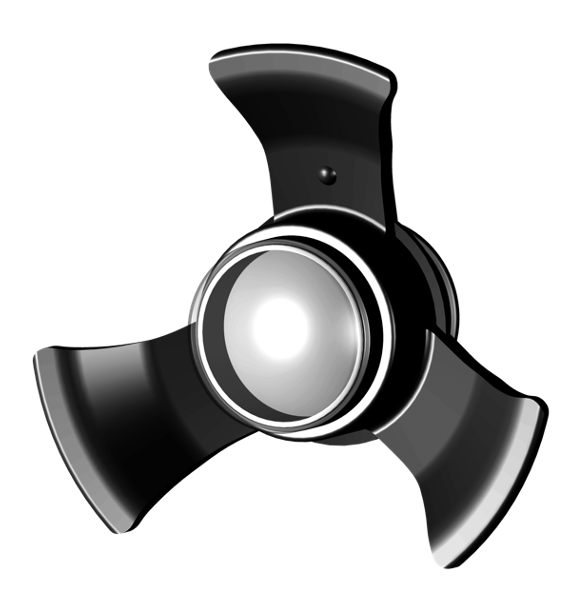Heidelberg, 28 June 2023. We are happy to announce another relevant publication in the open access journal Ophthalmology Science of the American Academy of Ophthalmology!
- Laboratory analysis of causative factors for the final incision size due to intraocular lens injector insertion. Maximilian Friedrich, Isabella D. Baur, Timur M. Yildirim, Victor A. Augustin, Ramin Khoramnia, Gerd U. Auffarth. Ophthalmology Science. Elsevier. Available online 25 June 2023. https://doi.org/10.1016/j.xops.2023.100356
The problem
In cataract surgery small corneal incisions are associated with a significantly better visual recovery. However, what are initially small incisions can enlarge during surgery and that impedes the positive effects of keeping the incision small. Our goal was to identify the surgical factors that cause a larger final incision size (IS).
What we did
We analyzed a total of 409 incisions made with 13 different IOL injector models. For every case, we measured under the microscope the injector’s vertical tip diameter and the tip angulation. Preoperatively, we measured the corneal thickness at the incision location. During surgery, the initial IS, the final IS, the incision length and the insertion depth of the IOL injector into the incision - all were documented. Afterwards, we used a mixed effects model to analyze which parameters have a significant influence on the final IS.
Our Results

With our model we could explain 92% of the variation of the final incision size. What we found that was significantly associated with an increased final incision size (p < 0.05) was,
- an increase in the vertical diameter of the injector tip,
- an increase in the preoperative IS
- an increase in the insertion depth
- a reduction of the incision length.
What did not have a significant influence was: the corneal thickness and the angulation of the injector tip.
Future prospects
We have identified interesting leverage points that might optimize the surgical outcome in cataract surgery. We can recommend that IOL-manufacturers should reduce the vertical diameter of the injector tip to a minimum while making sure IOL implantation remains safe and successful.
Furthermore, ophthalmic surgeons may themselves try to reduce the preoperative incision size and the insertion depth of the injector - that can reduce the final incision size even more.
Read our paper and find out more about incision sizes here:
 Maximilian Friedrich
Maximilian Friedrich 
 DOC23 Success
DOC23 Success